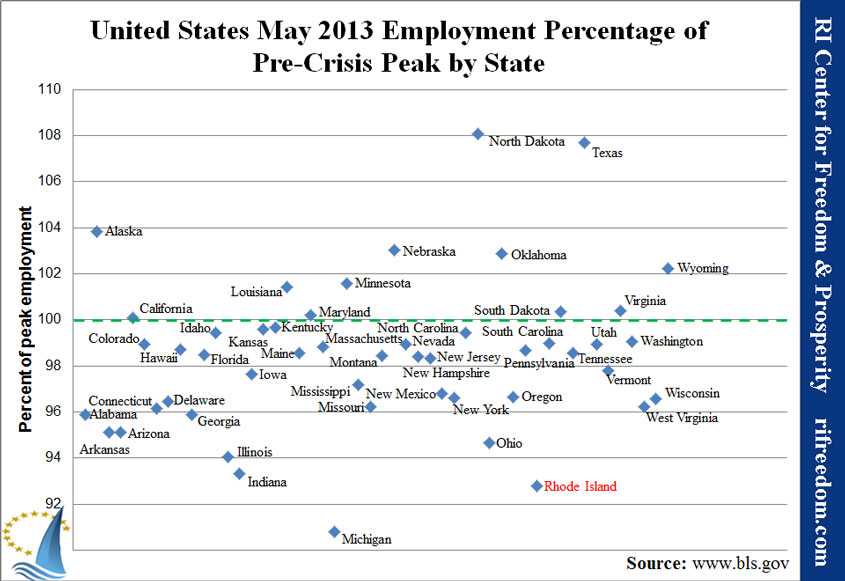Employment in May: Steady as She Doesn’t Go
A silver lining to Rhode Island’s dark employment cloud: the unemployment rate went up because the labor force (those working or looking for work) increased more than the number of people employed. Unlike times when the unemployment decreases because the labor force is hollowing out, that might be a sign of actual recovery. When the economy improves, more people who’d given up may renew their job searches.
Of course, one month does not a trend make, and the labor force is still down 4,300 Rhode Islanders from where it was in December. If all of those people were still looking for work, Rhode Island’s unemployment rate would be the highest in the country. Nevada, the current unemployment leader, actually added jobs at twice the rate of the Ocean State since that month, but its labor force grew, diluting improvement of its unemployment rate.
The following chart shows that the small ups and downs in employment over the course of this year haven’t amounted to much of an improvement in Rhode Island.
Putting those results in the context of our neighboring states shows just how far Rhode Island has drifted from where it should be expected to be. The chart shows the labor forces and employment of Massachusetts, Connecticut, and Rhode Island as a percentage of each state’s labor force as of January 2007, when the recession began for Rhode Island. With respect to employment, Massachusetts has maintained a steady climb, now almost to where it was at the start of the recession, while Connecticut has experienced a steady decline. Rhode Island, by contrast, looks like an engine that can’t quite turn over.
The next chart puts Rhode Island’s employment in a national context by measuring each state’s percentage of its pre-recession peak. Each state entered the recession at a different time, and each state’s fall and recovery was distinct, so this chart allows a comparison of how each has dealt with the downturn.
Rhode Island has long been the second-farthest from its peak, second only to Michigan. However, Michigan (which became a right-to-work state at the end of last year) has experienced one of the fastest increases in employment in the nation since December. What’s telling in this chart is not only that Rhode Island is lagging the nation overall, but is a thorough outlier within its region, even expanding as far as Pennsylvania and Virginia.
The final chart shows employment growth since the nation’s overall job recession ended, in February 2010. Rhode Island has managed to be on the positive side of the horizontal axis, but it’s still one of just seven states with employment growth of less than one percent in the three-plus years since that start date. The national average is over three percent.







